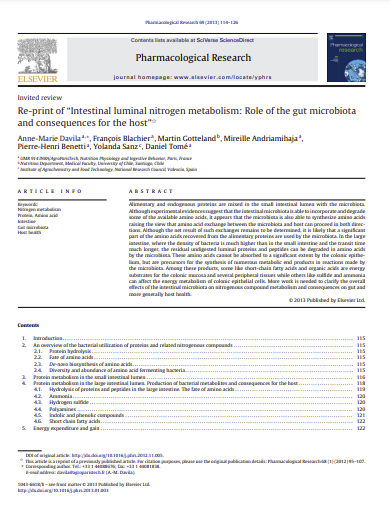Re-print of "Intestinal luminal nitrogen metabolism
Licencia: Creative Commons (by-nc-nd)
Autor(es): Davila, Anne; [et al.]
Alimentary and endogenous proteins are mixed in the small intestinal lumen with the microbiota. Although experimental evidences suggest that the intestinal microbiota is able to incorporate and degrade some of the available amino acids, it appears that the microbiota is also able to synthesize amino acids raising the view that amino acid exchange between the microbiota and host can proceed in both directions. Although the net result of such exchanges remains to be determined, it is likely that a significant part of the amino acids recovered from the alimentary proteins are used by the microbiota. In the large intestine, where the density of bacteria is much higher than in the small intestine and the transit time much longer, the residual undigested luminal proteins and peptides can be degraded in amino acids by the microbiota. These amino acids cannot be absorbed to a significant extent by the colonic epithelium, but are precursors for the synthesis of numerous metabolic end products in reactions made by the microbiota. Among these products, some like short-chain fatty acids and organic acids are energy substrates for the colonic mucosa and several peripheral tissues while others like sulfide and ammonia can affect the energy metabolism of colonic epithelial cells. More work is needed to clarify the overall effects of the intestinal microbiota on nitrogenous compound metabolism and consequences on gut and more generally host health.
[2013]
Compartir:
Una vez que el usuario haya visto al menos un documento, este fragmento será visible.


